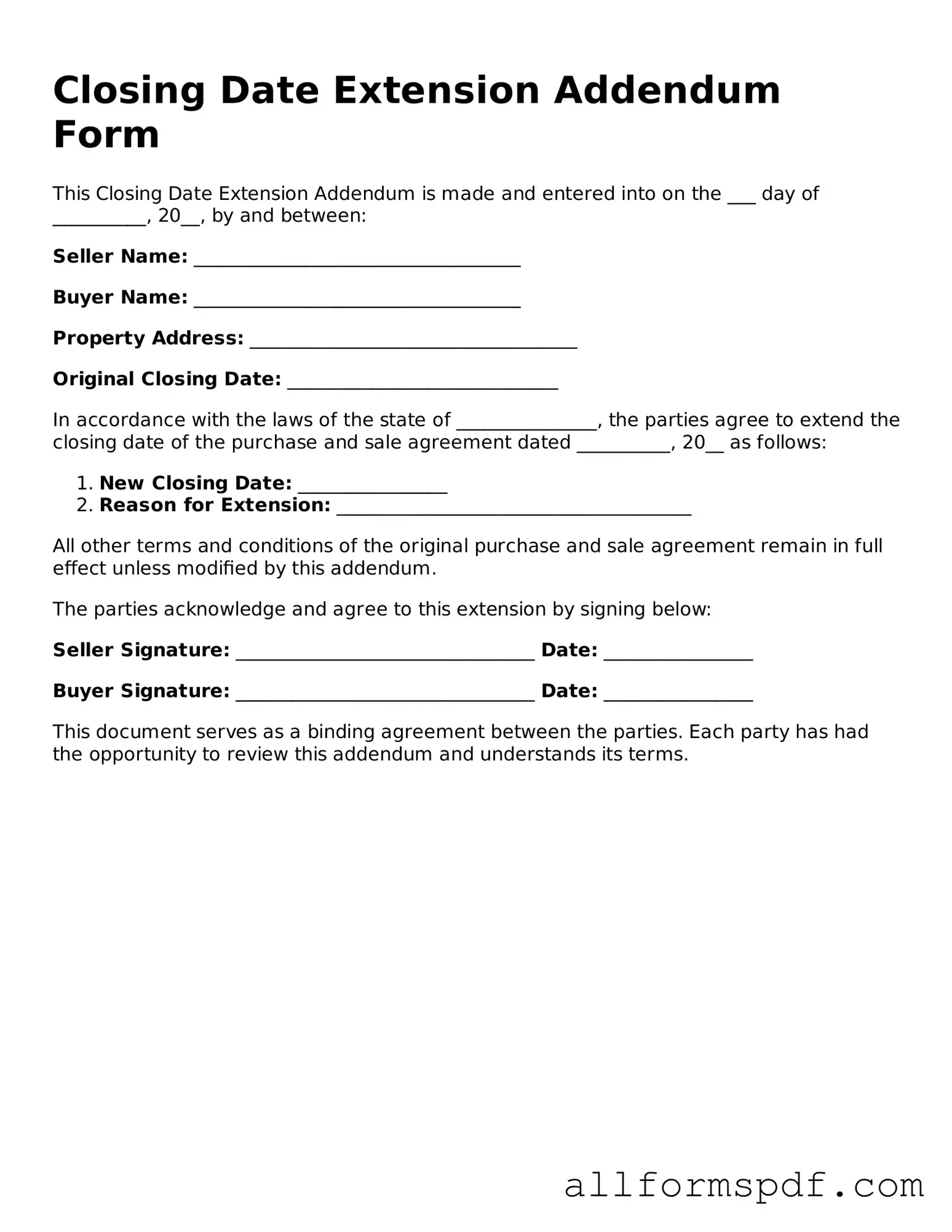When filling out the Closing Date Extension Addendum Form, many people overlook important details that can lead to complications. One common mistake is failing to include the correct closing date. This date is crucial, as it sets the timeline for the transaction. If the date is incorrect, it can cause confusion and potentially delay the closing process.
Another frequent error is neglecting to provide the necessary signatures. All parties involved must sign the addendum for it to be valid. Omitting a signature can render the document ineffective, creating legal issues down the line. It’s essential to double-check that everyone has signed before submitting the form.
Some individuals also forget to specify the reasons for the extension. While it may seem unnecessary, including a clear explanation helps all parties understand the need for the change. Without this context, misunderstandings may arise, leading to frustration among those involved.
Inaccurate contact information is another mistake that people make. Providing outdated or incorrect phone numbers and email addresses can hinder communication. This can delay the process further, as parties may struggle to reach one another for updates or clarifications.
Additionally, failing to review the entire form before submission is a significant oversight. Errors in spelling, grammar, or formatting can detract from the professionalism of the document. Taking a moment to proofread can prevent unnecessary complications and ensure that the form is taken seriously.
Lastly, many people do not keep a copy of the completed addendum for their records. This can lead to confusion if questions arise later about the terms of the extension. Always retain a copy for personal reference. This simple step can save time and effort in the future.
